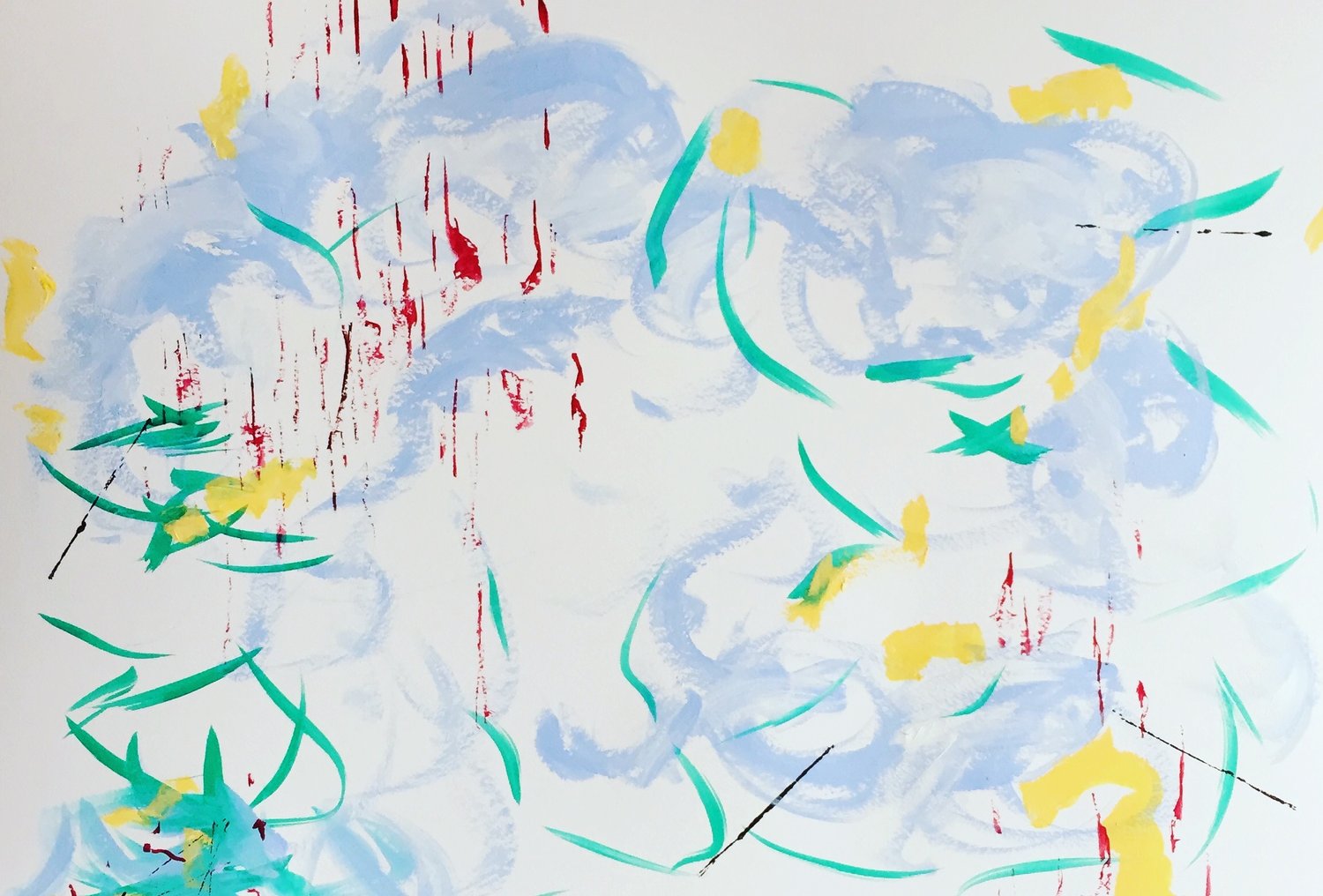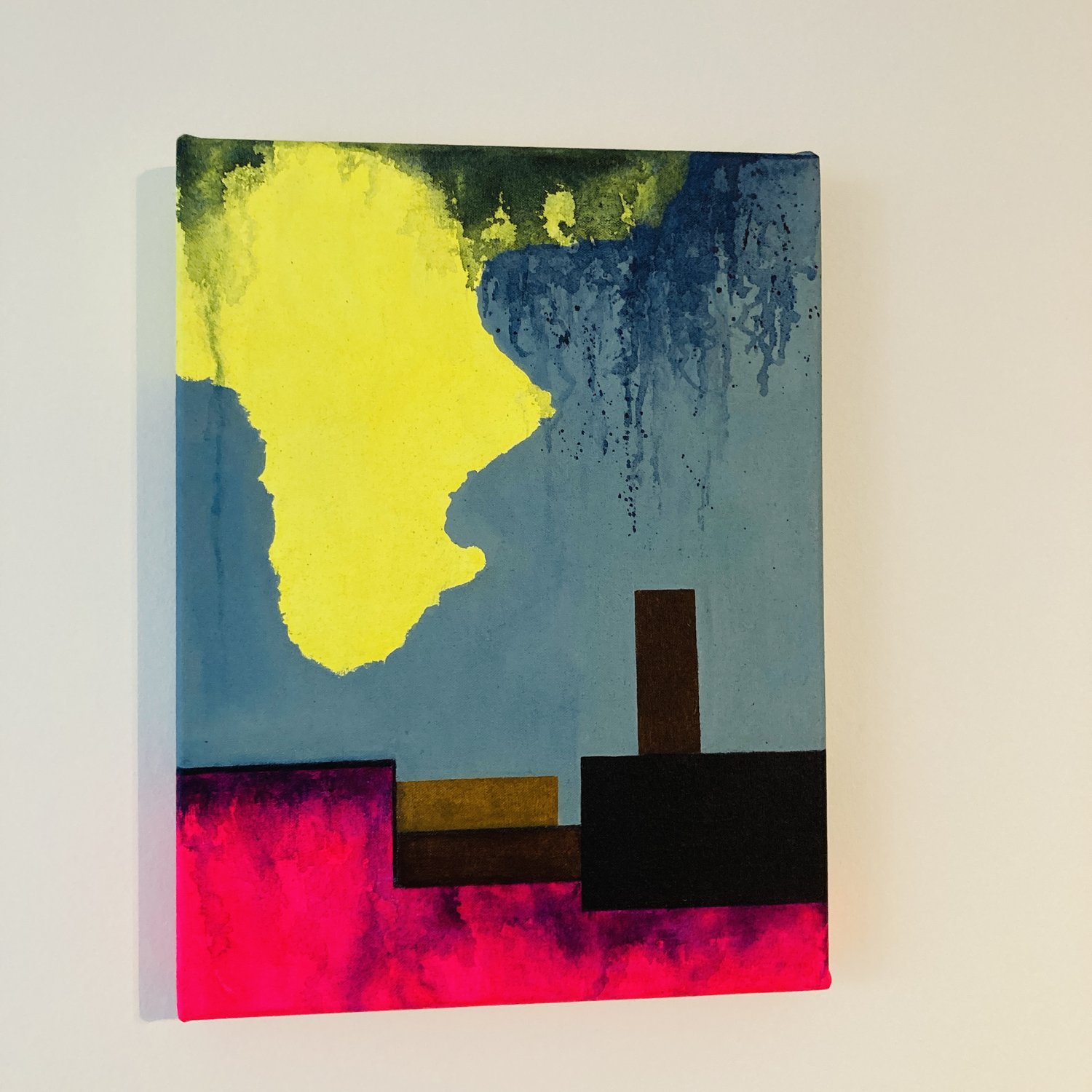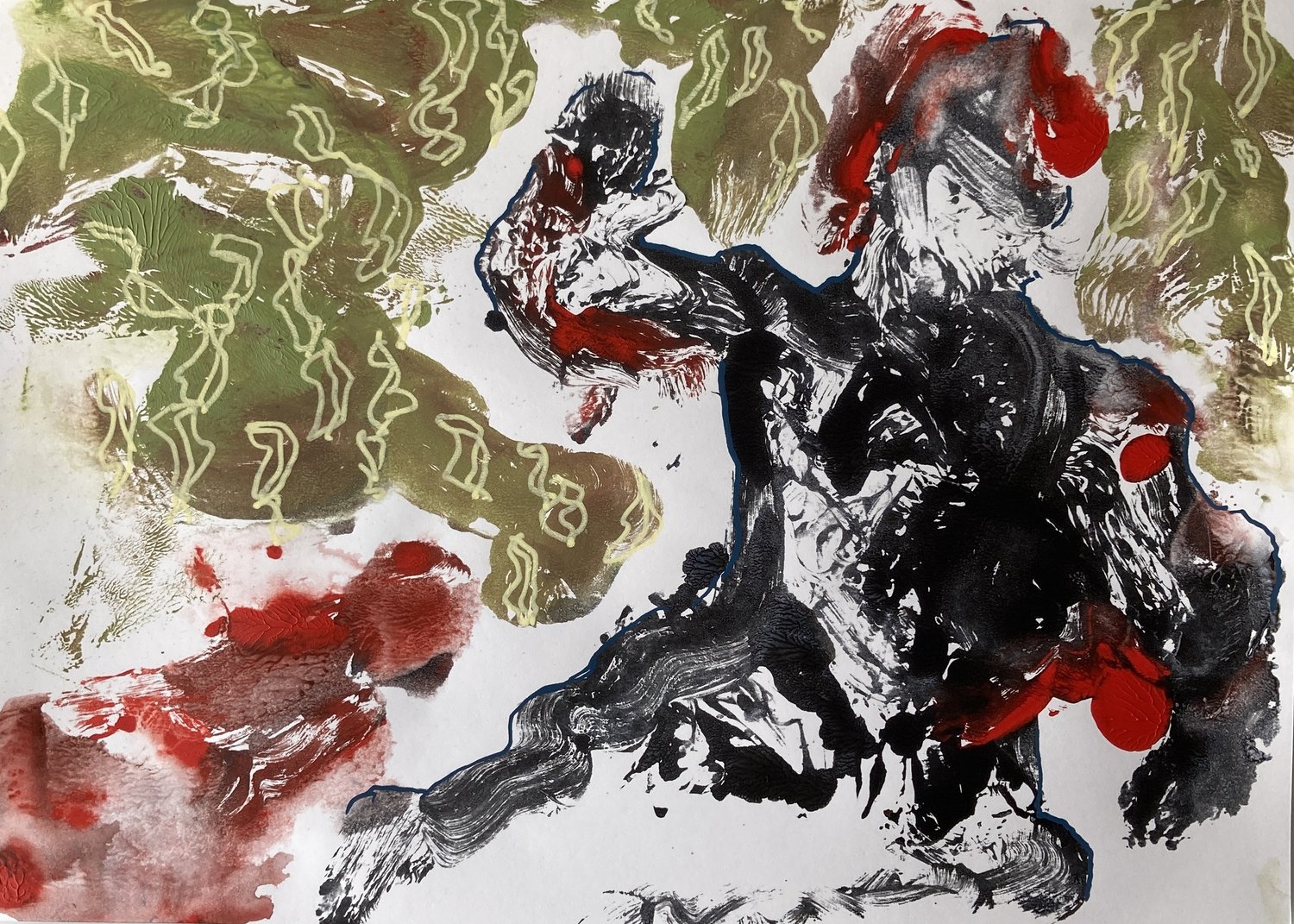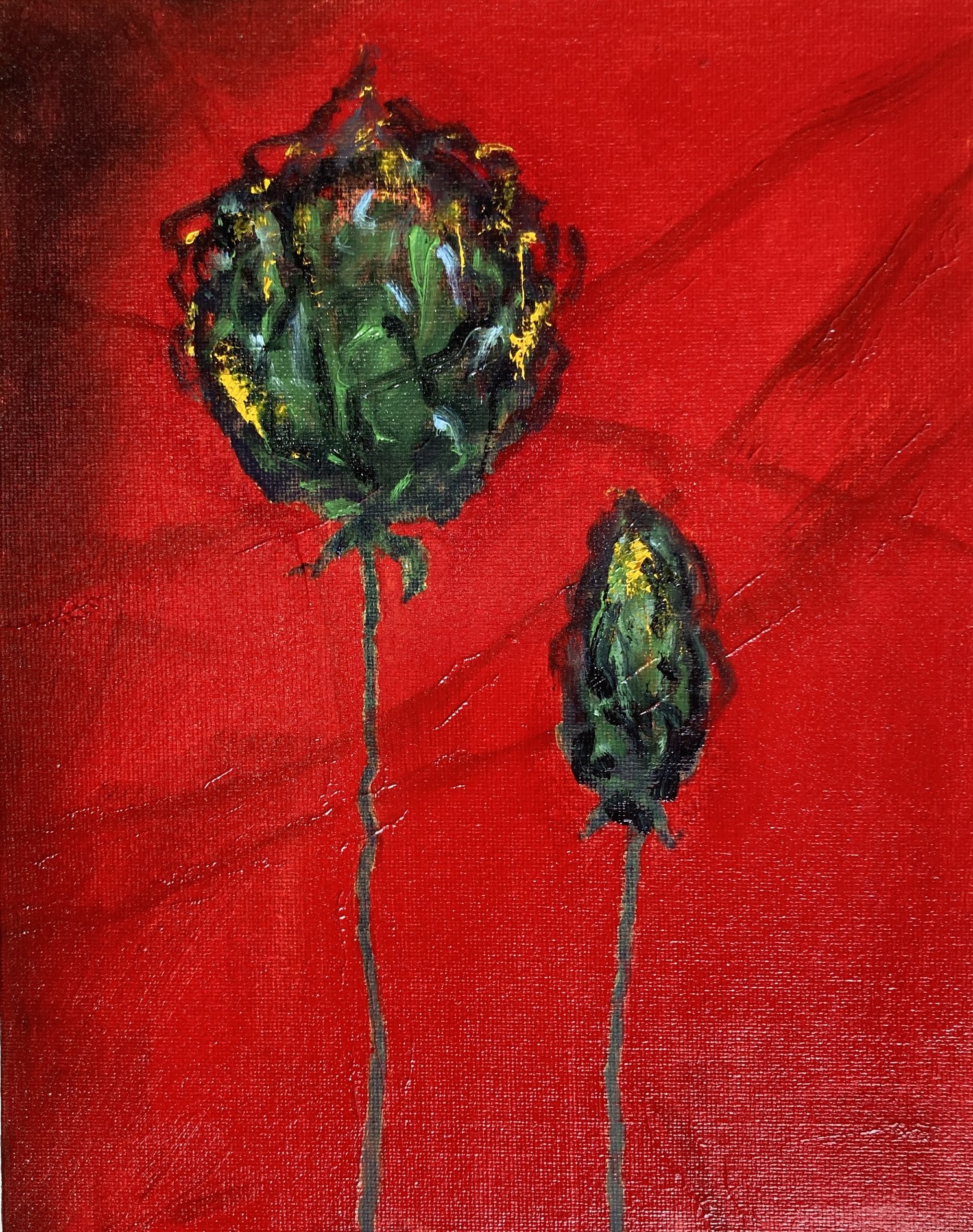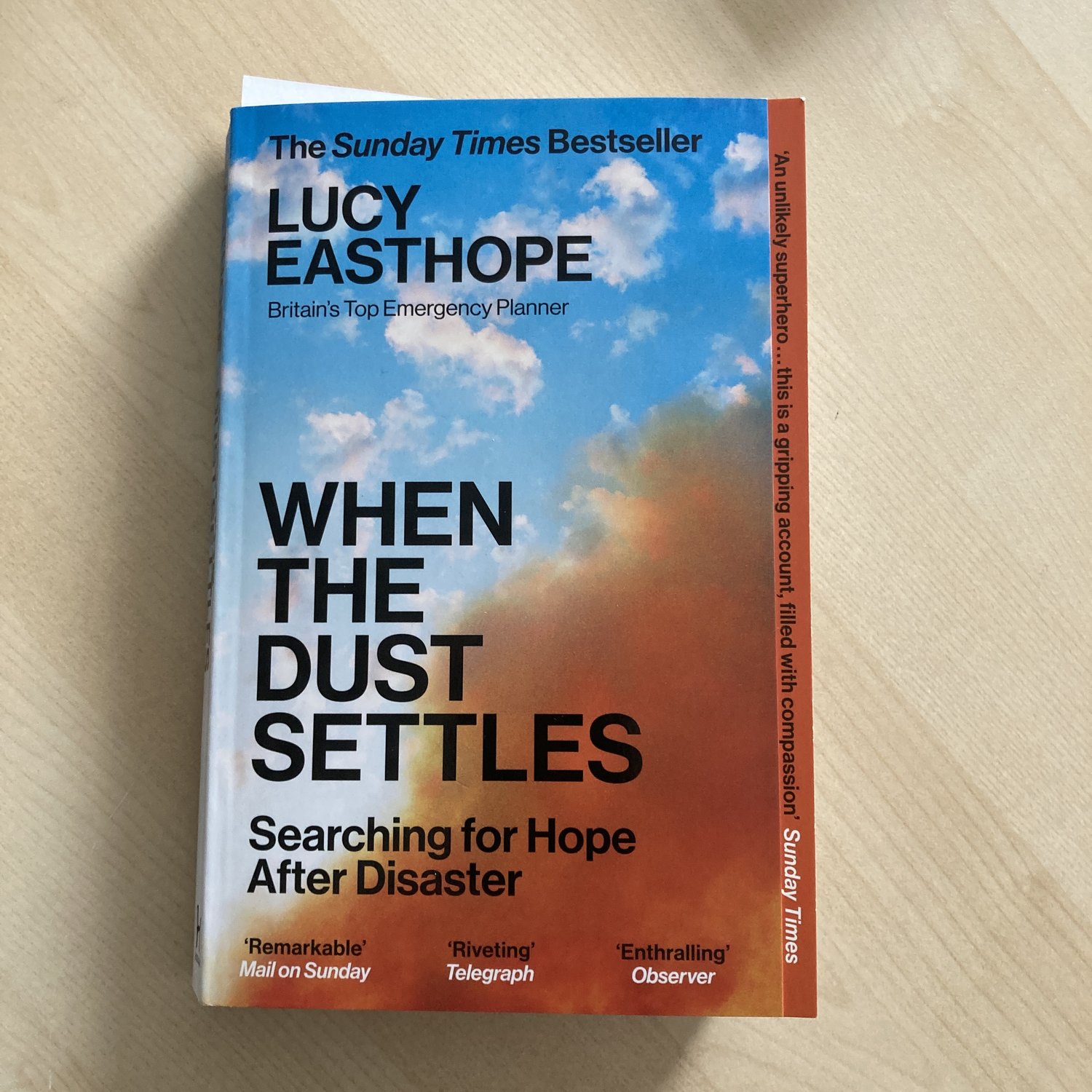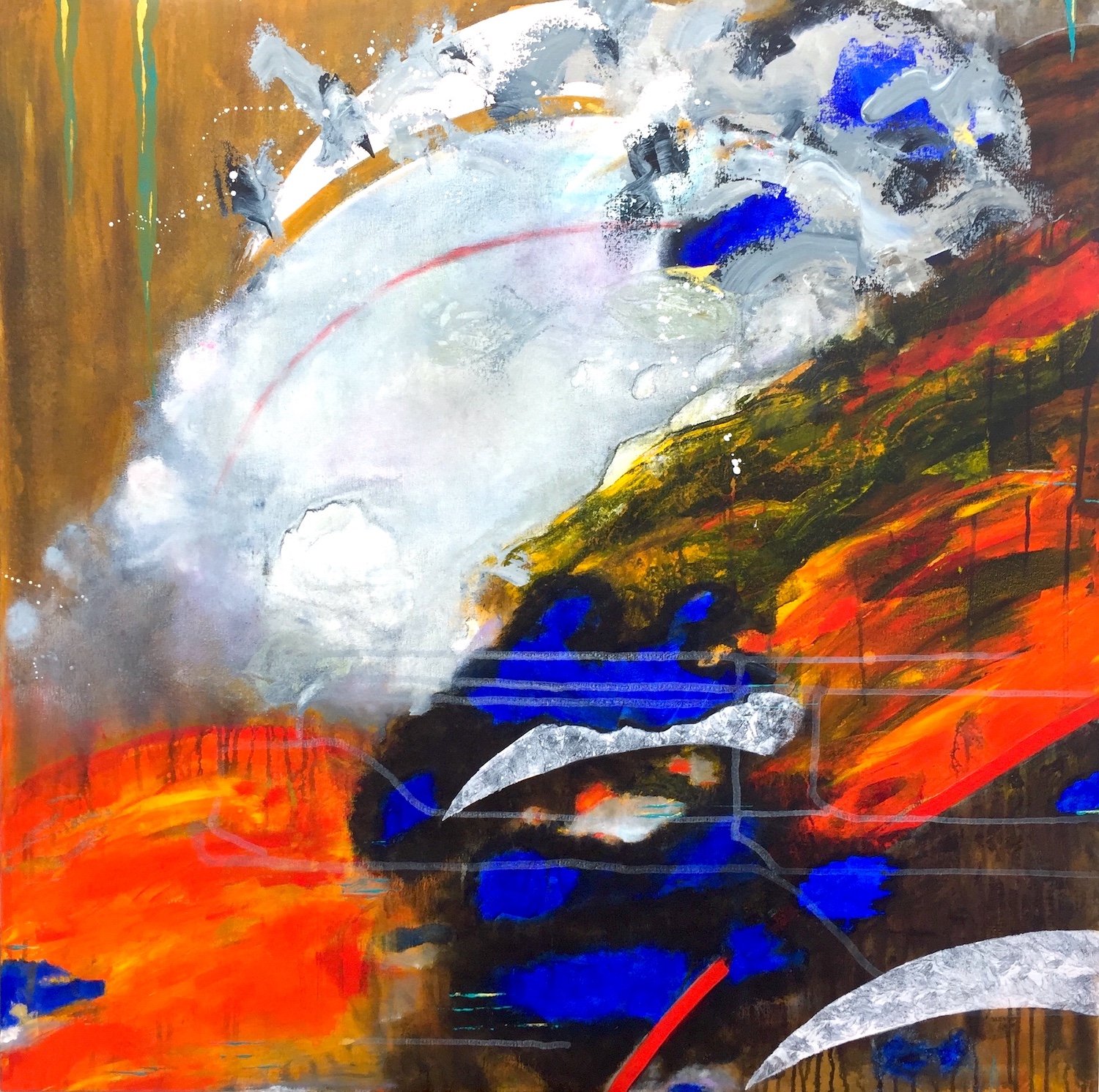“In what ways do we belong to the world?”
This question lies at the core of the work of John Berger, according to Nikos Papastergiadis in an essay Forest (A Jar of Wild Flowers: Essays in celebration of John Berger, 2023, p.83.)
Such a profound question ~
It’s a question that helps me think about my painting in general – how I want to share something of my experience in the world as an older woman – and about how I can develop it through the particular and specific.
Currently I’m working on a series of abstract paintings that arise from walking the canal path in Oxford on my way to my new studio. Houses and gardens back on to the canal, some humble and some grand. Each meeting of garden and canal is different. What people do with their 3 or 4 metre stretch of bank is fascinating to me. Each has some way of holding up the small bank, while often including a step down to the water. There are old trees in random positions along the canal that have been built around. Some board their canal edge and place chairs there. Some keep canoes. Some incorporate it into the garden. Some keep it very trim; others let it grow wild. Many have little sheds there, some turned into offices. And from my vantage point across the water, I see what’s happening at canal level – broken steps, weeds, shadows, and ducks.
On sunny mornings, the low English sun strims through buildings and branches on to the green water. Sometimes the brightness lies beyond the dark bank, pulling the eye up into the garden. Sometimes patches of sky lie on the water.
My paintings take from the experience of walking and looking. They take the random patches of light and shade, the horizontals and verticals of planks and steps and sheds, the secret tangles below the bank and the overhanging tangles of branches and brambles.
In choosing colour and combining forms, I am speaking of how I belong to this world –committed still to the practice of attention and noticing, starting over in a new studio, priced out of houses backing on to water, privileged to walk on this path, while slightly wary as a woman alone.
Half a world away in New Zealand, I transform this particular, specific belonging into little studies on paper, in preparation for big paintings on canvas.

